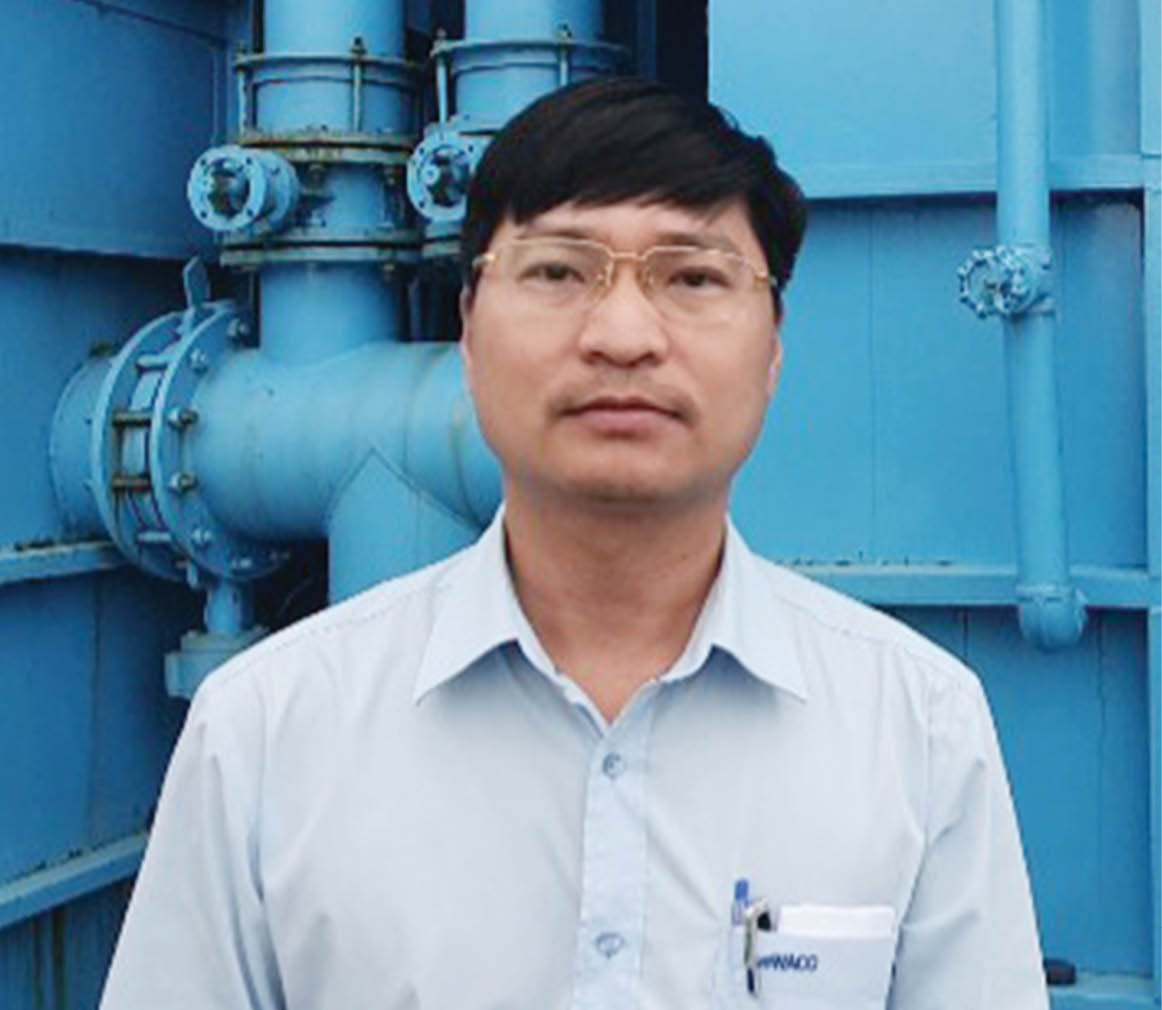
Mr. Truong Cong Han, General Director of HueWACO
High water level and power outage in low-lying areas posed a challenge for water plants, is this correct, Sir?
Due to the influence of raining and flooding, the water plants were deeply flooded. At Hoa Binh Chuong water plant, the river water level was 4m higher than normal, 0.62m higher than the ground level. At Phong Thu water plant, the water was 0.6m from the ground level, and the flood water was 0.3m higher than the 1999 flood level. At Dien Mon Pressure Regulator Transshipment Station, the water level was 0.24m higher than the plant’s ground level, 5cm higher than the water level in 1999 ... High water level and power outage in low-lying areas posed a great challenge for HueWACO .
What solutions did the company have to overcome this difficulty?
Deep flooding caused power outage at 7 out of 30 water plants and 9 out of 33 booster stations. In particular, at Van Nien water plant, with the largest water supply capacity and accounting for 75% of the province's water demand, the power supply was not stable. This led to a high risk of water-cut for nearly 800,000 people in Hue city and surrounding areas. HueWACO had to run the generator for many hours to ensure sufficient water supply for the people.
.jpg)
Troubleshooting the pipeline at Khai Dinh bridge
Due to the heavy rainfall, the flow rate in the streams increased sharply, and many deep inundation points also seriously affected the water supply system, especially in the Nam Dong and A Luoi areas. The floods caused the D225 water pipe from the Ta Re dam to be washed away. Dams Son Thuy, Phu Vinh, Dong Son, A Roang were blocked or had pipes washed away... Many pipelines in other areas were damaged.
Can you be more specific?
During floods and storms, the power system often stops the power supply, so most of the water plants have to use backup power from generators. According to calculations, the cost of using electricity from the generator is very high (19,600 VND/kWh), 10.7 times higher than using the electricity from the power grid (1,828 VND / kWh).
Rain and flood caused the roads, especially the one to A Luoi, to be eroded and divided. The upstream dams, especially in the mountainous districts, were prone to clogging due to the large amount of soil and rock coming from the upstream. Access to upstream dams was very difficult due to fast and dangerous water flows, and it was very difficult to overcome the problems.
Availability of supplies and backup equipment is the key solution to ensure water supply in the rainy season, isn't it, sir?
Not quite. People are really an important factor in ensuring safe water supply throughout floods and storms.
In fact, in the process of overcoming water supply problems, this was proven clearly when the damaged points in storms were in very dangerous locations, such as rivers and streams with high flow rates, deep floods ... If the human resource was not willing to “sacrifice” their lives for the common goals, it would be difficult to overcome. This is also a culture that HueWACO has been building for the common goal of ensuring safe water supply for people.
HueWACO has mobilized nearly 300 employees to monitor rainfall and flood levels to continue flood prevention, reduce human and property damage, participate in solving water supply incidents, to supply clean water continuously to people during floods. Although many employees’ houses were deeply flooded, they still focused on overcoming problems caused by the floods and storms.
HueWACO strictly implements the motto "4 on the spot, 3 ready" (on-site command, on-site materials and equipment, on-site human resource; 3 readiness including proactive prevention, timely response, quick and effective solutions). The water plants were prepared with full resource of materials, chemicals, and generators.
Does rain and flood affect the quality of water supplied?
Currently, the input water of Van Nien - Quang Te, Phong Thu, Nam Dong and Tu Ha plants has source water turbidity up to 1,000 NTU (100 times higher than normal), content of organic matter, iron, manganese in the water is also 10 times higher than normal. Currently, HueWACO is fully active in technology, and water quality monitoring is also continuously monitored.
Normally, each water plant only has 1 to 2 water treatment operators in 1 shift (8 hours) and the Water Quality Control Department will take water samples from the plants to check at a frequency of once a week, but now all plants have arranged 100% of operator workers (from 4-8 people in a shift) to monitor the treatment operation and source water quality.
The treated water is checked by the Water Quality Control Department every hour for reporting. Increasing the frequency of hourly water testing will promptly detect potential abnormalities or hazards to propose timely treatment.
HueWACO has successfully studied and applied many projects to maintain safe water supply, especially during floods to help maintain the post-filter turbidity below 0.02 NTU (100 times lower than the Ministry of Health's standards), the amount of iron in the water drops below 0.01mg/l (30 times lower) and Mn goes below 0.001mg/l (300 times lower), compared to the standards set by the Ministry of Health.
In case of water loss due to an incident, can HueWACO secure a backup water supply?
All the factories have backup water tanks, so if local water loss occurs at the locations, the factories will put these backup tanks into temporary water supply operation during the period time of storms and floods, minimizing water-cut to the people.
For isolated areas or for areas where generators cannot ensure capacity, the factories will actively send tank trucks to supply people while waiting for remediation to ensure that people will not be without clean water.
By Hoang Loan
